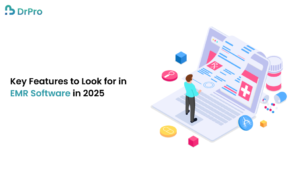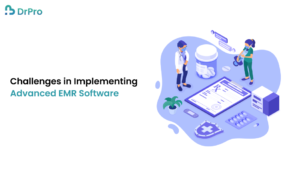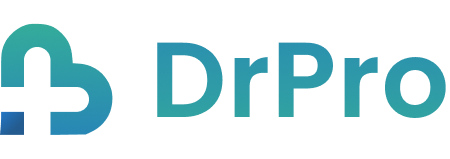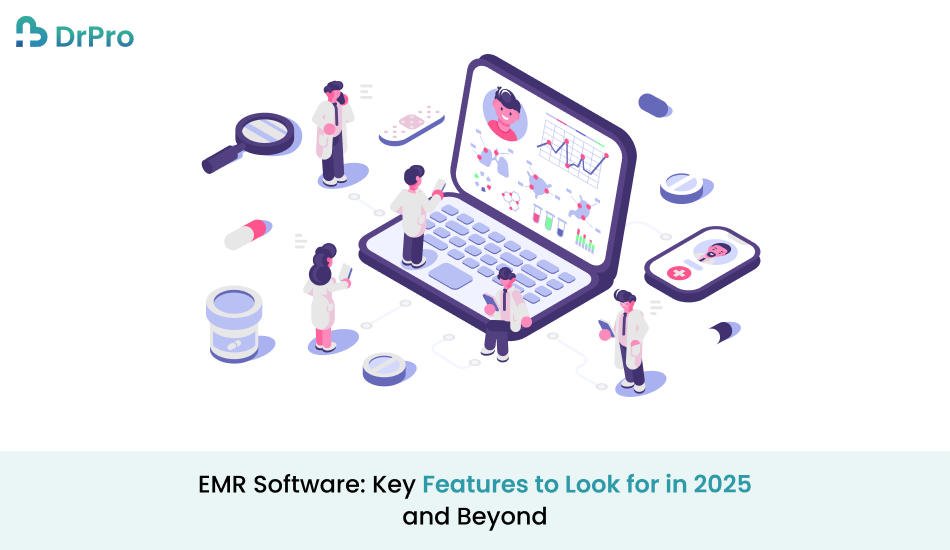Electronic Medical Records (EMR) systems have revolutionized the healthcare organization, supplying a virtual method to managing affected men or women’s’s information and enhancing typical healthcare transport. In 2025 and the past, because the healthcare area keeps complying, the feature of EMR software program software will become even more crucial. EMR structures offer healthcare companies an organized, on-hand, and steady technique for storing and getting access to affected personal data. As generation continues to enhance, new functions and skills might be added to these systems to beautify performance, beautify the affected character experience, and observe rising policies.
This article explores the important thing functions to search for in EMR software program software in 2025 and past. With expertise in one’s functions, healthcare carriers could make knowledgeable selections approximately the nice software program application to fulfill their desires and the needs of their patients.
The Growing Importance of EMR Software
The transition from paper-primarily based statistics to EMR software programs has already caused big improvements in healthcare transport. EMR structures allow healthcare companies to keep, retrieve, and percentage affected person information extra successfully, in the end decreasing errors and enhancing affected person consequences. These structures have become fundamental in contemporary healthcare, supporting capabilities together with affected man or woman charting, clinical billing, affected person scheduling, and scientific choice-making.
As healthcare becomes more statistics-driven, the importance of EMR software program applications will continue growing. By 2025, the emphasis will shift from without a doubt storing statistics to efficiently the usage of those statistics to decorate clinical consequences, optimize workflows, and make certain affected persons privateness and protected. The future of EMR software will be cognizance of interconnectivity, automation, artificial intelligence (AI), and affected person-centric functions.
Key Features to Look for in EMR Software in 2025

1. Interoperability and Data Sharing
Interoperability refers back to the capability of different healthcare structures, alongside EMR software, to exchange and interpret shared facts seamlessly. As the healthcare industry becomes more interconnected, interoperability will be a critical feature of EMR systems. In 2025, EMR systems will be required to percentage information in the course of outstanding systems, which includes laboratories, pharmacies, hospitals, and professionals.
For example, an affected individual journeying a representative has so that you can proportion their medical statistics with the professional’s workplace in real-time. This removes the need for repetitive assessments, ensures an entire expertise of the affected character’s scientific data, and improves the accuracy of diagnosis and treatment. In the future, strong interoperability will allow seamless information switch, irrespective of the platform getting used.
The 21st Century Cures Act, which is expected to keep evolving, is interesting to make healthcare statistics more accessible and person-centric. Healthcare vendors adopting EMR systems with strong interoperability capabilities might be capable of complying with these regulations, ensuring that they can percentage patient statistics efficiently at the same time as maintaining privacy and protection.
2. Artificial Intelligence and Machine Learning
Artificial intelligence (AI) and system getting to know (ML) are already making their way into healthcare, and by way of manner of 2025, the generation will be deeply incorporated into EMR software programs. AI and ML can analyze huge quantities of healthcare statistics to provide insights that may notably enhance affected person care and operational efficiency.
For example, AI can help in predicting affected character effects based totally on ancient facts and contemporary-day tendencies. It also can be used to discover styles that may not be right away obvious to human clinicians, which include early symptoms of persistent sicknesses or ability drug interactions. Machine analyzing models can constantly study and refine their predictions primarily based on new records, leading to more correct desire-making and custom-designed care.
In EMR software, AI-driven equipment can automate repetitive obligations, together with medical coding, information entry, and medical desire assistance, releasing healthcare specialists to the cognizance of affected person care. By 2025, healthcare providers can anticipate looking for more AI-primarily based skills in EMR systems that beautify performance and the splendid of care.
3. Cloud-Based Storage and Accessibility
Cloud computing has come to be increasingly more famous at some stage in industries, and healthcare isn’t always an exception. Cloud-based EMR systems provide quite a few blessings over traditional on-premise solutions, specifically in phrases of accessibility, scalability, and charge efficiency. With cloud-based EMR software program applications, healthcare companies can get the right of access to affected character records remotely, permitting better care coordination and versatility in affected character manipulation.
One of the key blessings of cloud-based systems is the potential to scale because the desires of the healthcare corporation grow. Providers can without problem upload new customers or storage capability without sizeable infrastructure investment. In addition, cloud-primarily based EMR systems are more resilient to records loss due to computerized backups and disaster restoration capabilities.
By 2025, healthcare corporations will increasingly depend upon cloud-primarily based absolutely EMR systems to decorate their workflows and ensure that affected man or woman records are easily available, regardless of region.
4. Patient-Centric Features
In modern years, there was a growing consciousness of affected person-centered care, and this fashion will hold into 2025. EMR systems will increasingly encompass capabilities that make it less difficult for patients to interact with their healthcare carriers and take control of their health.
One of the critical elements that affected person-centric functions to look for is the aggregate of patient portals. These portals permit sufferers to get entry to their scientific information, agenda appointments, request prescription refills, and talk at once with their healthcare agencies. Patient portals offer patients transparency and beautify verbal exchange, which ends up in better everyday care.
As we flow into 2025, affected person portals become greater advanced, offering extra features that incorporate customized fitness suggestions, far-off monitoring gear, and integration with wearable devices. These capabilities will assist patients in tuning their fitness development, getting admission to academic substances, and making informed picks approximately their care.
5. Data Security and Compliance
With the rise of cyber threats and records breaches, the importance of securing affected character statistics can’t be overstated. As healthcare companies deal with touchy data, EMR software program structures have to observe various regulatory necessities, which include the Health Insurance Portability and Accountability Act (HIPAA) in the United States.
By 2025, EMR software programs will want to satisfy an increasing number of stringent safety and compliance requirements. Advanced encryption, multi-element authentication, and normal protection audits may be popular functions for ensuring that affected personal information remains personal and constant.
Furthermore, EMR systems will need to help with facts-sharing guidelines, together with the 21st Century Cures Act, which objectives to make healthcare facts greater accessible and interoperable. Hospitals and clinics adopting EMR structures will want to make certain that they are fully compliant with these regulations to keep away from consequences and ensure that affected persons are kept in mind.
6. Automated Administrative Tasks
Administrative responsibilities are a primary burden for healthcare vendors, in particular in large organizations. EMR software Implementation programs can help alleviate this burden with the resource of automating habitual tasks, along with scheduling appointments, dealing with billing, and processing insurance claims. By reducing the need for manual record entry, EMR software software improves overall performance and decreases the danger of errors.
In the future, automation in EMR software will skip beyond administrative duties and boom to scientific workflows. For example, EMR systems ought to automate medical coding, reducing the time and effort required to assign codes to diagnoses and tactics. This can assist decorate billing accuracy and streamline sales cycle management.
As EMR systems turn out to be greater advanced, healthcare agencies can count on them to look for extra automation in administrative and scientific methods, leading to price financial savings and improved efficiency.
7. Integration with Telemedicine and Remote Monitoring
Telemedicine and far-off patient monitoring have won large traction in recent years, and this trend is expected to be preserved as we circulate toward 2025. EMR software program systems will need to combine with telemedicine systems and far-flung tracking gadgets to offer a persevering enjoyment for each healthcare provider and patient.
Telemedicine integration lets healthcare organizations conduct digital consultations, at the same time as far-off tracking systems permit them to track sufferers’ health metrics out of doors of the sanatorium or hospital. For example, EMR software may want to integrate with wearable gadgets to expose sufferers’ coronary heart fee, blood strain, or glucose levels in actual time.
This integration will enhance care coordination, enhance patient engagement, and make healthcare more available, mainly for sufferers in far-off or underserved areas.
8. Analytics and Reporting Tools
Data analytics will play an increasingly vital function in healthcare preference-making. EMR systems with strong analytics and reporting abilities will permit healthcare carriers to music key overall performance indicators (KPIs), reveal patient outcomes, and come to be aware of tendencies in affected person care.
By 2025, EMR structures will provide more advanced analytics tools that provide insights into operational efficiencies, medical effects, and affected person pride. These equipment will enable healthcare vendors to make statistics-driven choices that decorate both care fantastic and organizational performance.
For instance, healthcare directors ought to use EMR analytics to music readmission charges, select out bottlenecks in affected individuals go with the flow, or take a look at the effectiveness of specific remedies. This records-driven technique will help healthcare businesses constantly decorate their operations and affected person care.
Challenges in Implementing Advanced EMR Software

While the blessings of advanced EMR software programs are smooth, healthcare companies face several challenges when adopting new systems. One of the number one stressful situations is the fee of implementation, which may be a great barrier for smaller corporations. Additionally, the body of employees’ education and trade control is critical to ensure a clean transition to a present-day device.
Data migration from legacy structures to trendy EMR software is a different project, as healthcare businesses want to make certain that affected person statistics is because it should be transferred without compromising their integrity. Finally, some healthcare vendors may also withstand adopting a new era due to worries about the complexity of the machine or a loss of technical expertise.
Conclusion
As we move closer to 2025 and the past, the function of EMR software programs in healthcare will be preserved to comply. Healthcare vendors will rely upon greater sophisticated features such as interoperability, AI, cloud-primarily based total storage, and patient-centric equipment to decorate affected character care, beautify operational performance, and comply with rising regulations. The future of DrPro’s EMR software is shiny, and healthcare agencies that adopt these superior systems can be better prepared to fulfill the challenges of the evolving healthcare panorama.
By specializing in the vital things capabilities mentioned in this newsletter, healthcare carriers should make knowledgeable selections approximately the first-rate EMR software for his or her needs. Whether integrating telemedicine, automating administrative obligations, or the use of advanced analytics, the right EMR tool may be crucial in shaping the future of healthcare.
By joining forces, ProjectTree and DrPro provide a unified platform that streamlines project management and healthcare workflows for greater efficiency
FAQs
Q1. What is EMR software?
EMR (Electronic Medical Records) software program program is a digital gadget used by healthcare corporations to control patient information, which includes clinical history, diagnoses, remedies, and check outcomes. It permits less difficult information to get proper access to, sharing, and everyday management of affected person statistics.
Q2. Why is interoperability crucial in an EMR software program program?
Interoperability allows one type of healthcare structure to trade and interpret affected man or woman facts, making sure of seamless verbal exchange at some point of numerous healthcare vendors and systems. This results in higher care coordination reduces duplication of tests, and improves patient consequences.
Q3. How does AI beautify EMR software programs?
AI in EMR software software allows automate repetitive obligations, predict affected person consequences, and find out styles that won’t be right away obvious to healthcare carriers. It can also assist in medical selection-making using studying sizeable portions of records and providing insights for personalized care.
Q4. What function does cloud-primarily based total storage play in EMR software program software?
Cloud-based totally garage lets healthcare companies get admission to affected person statistics remotely, making it greater bendy and scalable. It guarantees that patient records are backed up and guarded, and enables reduce the price and complexity associated with on-premise infrastructure.
Q5. How does an EMR software program beautify patient care?
EMR software application improves affected person care by making patient records without difficulty available and ensuring that healthcare vendors have correct, updated records. Features like affected character portals, telemedicine integration, and automatic administrative obligations result in higher engagement, faster decision-making, and extra green care transport.


